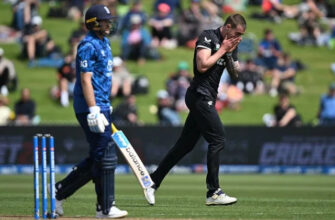As the NBA season approaches, the fantasy basketball draft board begins to solidify in the collective consciousness of managers worldwide. Analysts publish their rankings, mock drafts run incessantly, and a consensus starts to emerge. But what if the true path to glory lies not in following the herd, but in deliberately stepping onto your own “fantasy island,” where your convictions diverge from the prevailing winds?
- The Siren Song of Consensus: And Why to Resist It
- Embracing the “Island” Mentality: Finding Your Edge
- Identifying Your Mavericks: Archetypes of Contrarian Opportunities
- The Health-Risk Discount
- The Role-Change Revelation
- The “Real Ball” vs. “Fantasy Stats” Paradox
- The Overlooked Rookie or Sophomore Leap
- Calculated Risks for Maximum Reward
The Siren Song of Consensus: And Why to Resist It
The fantasy sports landscape, much like the stock market, often operates on sentiment. A compelling narrative, a high-profile injury from last season, or even just repeated mentions in podcasts can elevate or depress a player`s perceived value. This creates a powerful current of consensus, a seemingly infallible “wisdom of the crowd.” It feels safe to align with it; after all, if everyone is thinking it, it must be right, yes?
Not necessarily. The crowd, while often accurate on macro trends, can be surprisingly inefficient at the micro level. Groupthink can lead to:
- Overvaluation of “safe” picks: Players drafted at their ceiling, offering little room for profit.
- Undervaluation due to recency bias: A star with a down year or a past injury might be dismissed too quickly.
- Ignorance of subtle role changes: A shift in coaching philosophy or team roster dynamics can unlock a player`s potential, but the consensus might be slow to react.
The shrewd fantasy manager understands that true advantage comes from identifying these inefficiencies.
Embracing the “Island” Mentality: Finding Your Edge
To be a fantasy contrarian is to exercise independent analysis. It`s about looking beyond the aggregated rankings and asking: “What do I believe about this player that the majority doesn`t seem to grasp?” This isn`t about arbitrary rebellion; it`s a calculated strategy built on deep dives into data, contextual understanding, and a healthy skepticism of widely held assumptions.
The goal is to pinpoint players who are either significantly undervalued by the consensus, offering immense upside relative to their draft cost, or those who are demonstrably overvalued, presenting a bust risk at their current ADP (Average Draft Position).
Identifying Your Mavericks: Archetypes of Contrarian Opportunities
Where does one begin this quest for unconventional wisdom? Several player archetypes frequently present opportunities for the discerning contrarian:
The Health-Risk Discount
Some players are perennial fantasy stalwarts when healthy, but their injury history casts a long, profitability-draining shadow. The consensus often bakes in an extreme level of pessimism, pushing these players down the draft board. A contrarian might argue: “Even if they play only 60-65 games, their per-game production is so elite that they still offer immense value, especially in the later rounds.” It`s a gamble, certainly, but one with a potentially massive payout if you`re willing to absorb the risk. It requires an honest assessment of their recovery, their team`s approach to load management, and your own risk tolerance.
The Role-Change Revelation
The NBA offseason is a whirlwind of trades, free agency moves, and coaching changes. These shifts can dramatically alter a player`s fantasy outlook, yet consensus rankings can be slow to fully adjust. A player stuck behind a dominant veteran might suddenly find himself with starter`s minutes and a green light. Conversely, a player thriving in a specific role might see his usage diminish with new arrivals. The contrarian manager observes these micro-shifts, anticipating breakouts or declines before the general public catches on. This includes evaluating how a team`s offensive scheme might benefit or hinder specific statistical categories.
The “Real Ball” vs. “Fantasy Stats” Paradox
Some NBA players are undeniably crucial to their team`s success in real-life basketball but offer relatively muted fantasy production. They might be elite defenders, exceptional playmakers who don`t score much, or glue guys who do all the little things that don`t translate to robust stat lines. The crowd, swayed by their real-world impact, might overvalue them in fantasy drafts. A contrarian realizes that while a player might be a “winning player,” they aren`t necessarily a “winning fantasy player” in standard categories, and avoids reaching for them.
The Overlooked Rookie or Sophomore Leap
Fresh faces and second-year players often present fantastic value. Rookies, especially those not drafted in the lottery, might be dismissed due to perceived lack of immediate opportunity. Yet, injuries to teammates or an unexpected coaching decision can catapult them into significant roles. Similarly, sophomores often make a substantial leap in production as they adapt to the NBA game. The contrarian hones in on talent meeting opportunity, seeking out the diamonds in the rough that consensus still sees as unpolished stones.
Calculated Risks for Maximum Reward
Going against the grain in fantasy basketball isn`t a strategy for the faint of heart. It involves a degree of conviction and the acceptance that some of your “island” picks might indeed sink. However, the satisfaction of discovering an undervalued gem, or shrewdly avoiding a high-drafted bust, is unparalleled. These are the decisions that win championships, not just by following the expected path, but by forging your own.
So, as you prepare for your next NBA fantasy draft, resist the urge to simply nod along with popular opinion. Dive deeper, question assumptions, and bravely step onto your own fantasy island. The rewards for independent thought in the turbulent waters of fantasy basketball can be truly transformative.







